The new Audi RS3 Sportback will go on sale in the UK later this month, keeping the £39,950 price tag of its predecessor.
The performance hatch, which has made its global debut at the Geneva motor show, is powered by a reworked 2.5-litre five-cylinder petrol engine producing 362bhp, and offers a supercar-challenging 0-62mph time of 4.3sec. First deliveries of the new model are planned for this summer.
Read our full road test review of the new Audi R3 Sportback.
The four-wheel-drive Ingolstadt mega-hatch has been extensively re-engineered for 2015 in a bid to dethrone the rapid Mercedes-Benz A45 AMG as class champion.
Among the second-generation RS3 Sportback’s more noteworthy developments is a new MQB platform structure that makes extensive use of hot-formed high-strength steel and a body shell incorporating an aluminium bonnet – a combination which sees it shed some 55kg over the model it replaces.
The new car will initially be available in a five-door hatchback body style, although Audi sources hint that a saloon version of the new RS3 is being readied as a riposte to the CLA45 AMG.
The new go-faster Audi is distinguished from its lesser A3 siblings by its aggressive front-end styling. Included is a uniquely shaped grille featuring a matt aluminium-look frame and high-gloss honeycomb insert, as well as a prominent bumper with large air ducts and decorative matt aluminium-look blades. LED headlights, which will be a standard feature on UK cars, complete the look.
Further back, there are widened front fenders, matt aluminium-look door mirror housings and widened sills beneath the doors. The rear receives a uniquely shaped spoiler above the tailgate, a more pronounced bumper with integrated diffuser along with more matt aluminium decorative elements and a pair of large oval tailpipes.
Power for the new RS3 Sportback comes from a reworked version of its predecessor’s turbocharged 2.5-litre five-cylinder petrol engine – the EA855, as it is known internally.
Mounted transversely, the 490mm-long unit gains a number of detail changes to meet EU6 emission regulations while providing a generous 32bhp increase in peak power over the engine used in the first-generation RS3, including the adoption of a new turbocharger which develops up to 1.3bar of boost pressure.
Its 362bhp equates to a specific output of 146bhp per litre – some 3bhp shy of the turbocharged 2.0-litre four-cylinder engine used in the latest S3, which delivers a peak output 296bhp. Torque is also increased by 11lb ft, taking it to 343lb ft delivered between 1625 and 5550rpm – a slightly wider band of revs than previously.
The engine returns a combined 34.8mpg, with CO2 emissions of 189g/km.
By comparison, the RS3 Sportback’s key rival, the Mercedes-Benz A45 AMG, produces 355bhp and 332lb ft from its turbocharged 2.0-litre four-cylinder engine.
However, AMG officials have already promised an increased output when a facelifted version of the A45 AMG arrives towards the end of 2015, hinting that the Audi’s reign as the most powerful car in its class may be a short-lived one.
The RS3 Sportback’s heady reserves are channelled through a standard seven-speed S tronic dual-clutch automatic gearbox offering both manual and automatic shifting. Like the engine, it has been upgraded with what Audi describes as “new solutions for filling the clutches with oil and the interplay with the engine” for improved shift times.
With the driveline switched into dynamic mode, the downshifts are performed with an automatic double-clutching effect for added smoothness.
The S tronic gearbox is allied to a modified electro-hydraulic, multi-plate clutch, four-wheel drive system. Now mounted within the rear axle assembly for improved weight distribution, it sheds 1.4kg over the previous system through the elimination of a pressure accumulator. Drive is constantly varied front to rear with between 50-100% going to the rear, depending on the conditions.
An electronically controlled torque-vectoring function also provides controlled braking of individual wheels for a more neutral line during hard cornering.
In a bid to heighten aural qualities, Audi has provided the RS3 Sportback with a two-stage exhaust, with flaps used to control the flow downstream of the muffler.
With an official kerb weight of 1520kg, the new RS3 Sportback tips the scales at 55kg under its predecessor. Along with the gain in power, this provides it with a 28bhp improvement in its power-to-weight ratio, at 238bhp per tonne.
Audi claims a class leading 0-62mph time of just 4.3sec, beating the old RS3 Sportback and A45 AMG by 0.3sec. Top speed is nominally limited to 155mph, although buyers will be able to specify an option that raises it to 174mph.
Reining in the car’s enhanced performance is a newly developed brake system. It uses vented 370mm steel discs with sizeable eight-piston calipers up front and 310mm steel discs with single-pot calipers at the rear. In a first for its class, the new RS3 Sportback also comes with the option of 370mm carbon-ceramic front discs.
Underpinning Audi’s most powerful series production hatchback is a heavily reworked version of the third-generation S3’s MacPherson strut front and multi-link rear suspension.
It has been lowered and also gains a number of unique components, including aluminium pivot bearings at the front end. The tracks are also unique to the RS3, increasing by 24mm up front to 1559mm and by 4mm at the rear to 1515mm. The standard five-spoke alloy wheels are 19 inches in diameter and come with 235/35-profile tyres front and rear.
As an option, buyers can opt for a magnetic ride system which provides adaptive damping. It is controlled by a standard Audi drive select system, which allows the driver to alter the characteristics of the throttle, steering and damping in four modes: Comfort, Automatic, Dynamic and Individual.
Also available are matt titanium or high-gloss anthracite black 19in alloy wheels with 255/30-profile tyres up front and 235/35-profile tyres at the rear.
Inside, the new RS3 Sportback receives a series of high-quality appointments commensurate with its price tag. Included are leather-upholstered sports seats, a leather and Alcantara-bound flat-bottomed multi-function steering wheel, a leather and aluminium-trimmed gear lever, unique instrument graphics, stainless steel pedals and Alcantara door trim elements.
Buyers can opt for optional RS bucket seats. With integrated side airbags and a carbonfibre shell, they are claimed to be 7kg lighter than the standard sport seats. Further options include an interior design package with red accents on the knee pad, air vents, floor mats and seat belts. UK cars will also get Audi's MMI infotainment system as standard.
A new saloon version of the RS3 will also follow soon after the launch of the hatchback. The new RS3 will take on rivals including the Mercedes A45 AMG and the long-rumoured BMW M2.
Like most major European manufacturers, Audi’s quattro division has a workshop at the Nürburgring for both chassis and durability testing, and it retains the services of some tame racing drivers.
Which is enough to make you nervous about ride quality. But former DTM and current GT driver Frank Stippler, who drove us around a soaking wet Nordschleife in the RS3, said: “The new bosses [new managing director Heinz Hollerweger, who replaced Franciscus van Meel at the start of the year] like a softer car.”
Unlike the RS4, in which, Stippler said, he never engaged the Dynamic chassis mode because it is so harsh that it’s “stiffer even than a race car”, the new RS3 is “at the softer end of the scale”.
Also evident on the wet track was the RS3’s throttle adjustability – a willingness to begin sliding at the rear on turn-in, and strong resistance to understeer under power. “Before, a Audi TT or RS3 would drift like this only on ice,” said Stippler. “Now it can do it in the wet.”
The RS3 has three ESP modes: all on, a more liberal setting and an all-off mode, which doesn’t even cut in under braking in order to avoid annoying advanced drivers who like to left-foot brake.
And given that ride harshness and a propensity to understeer have been our primary concerns about fast Audi hatches in the past, the RS3’s signs are encouraging.
Read more Geneva motor show news
Get the latest car news, reviews and galleries from Autocar direct to your inbox every week. Enter your email address below:


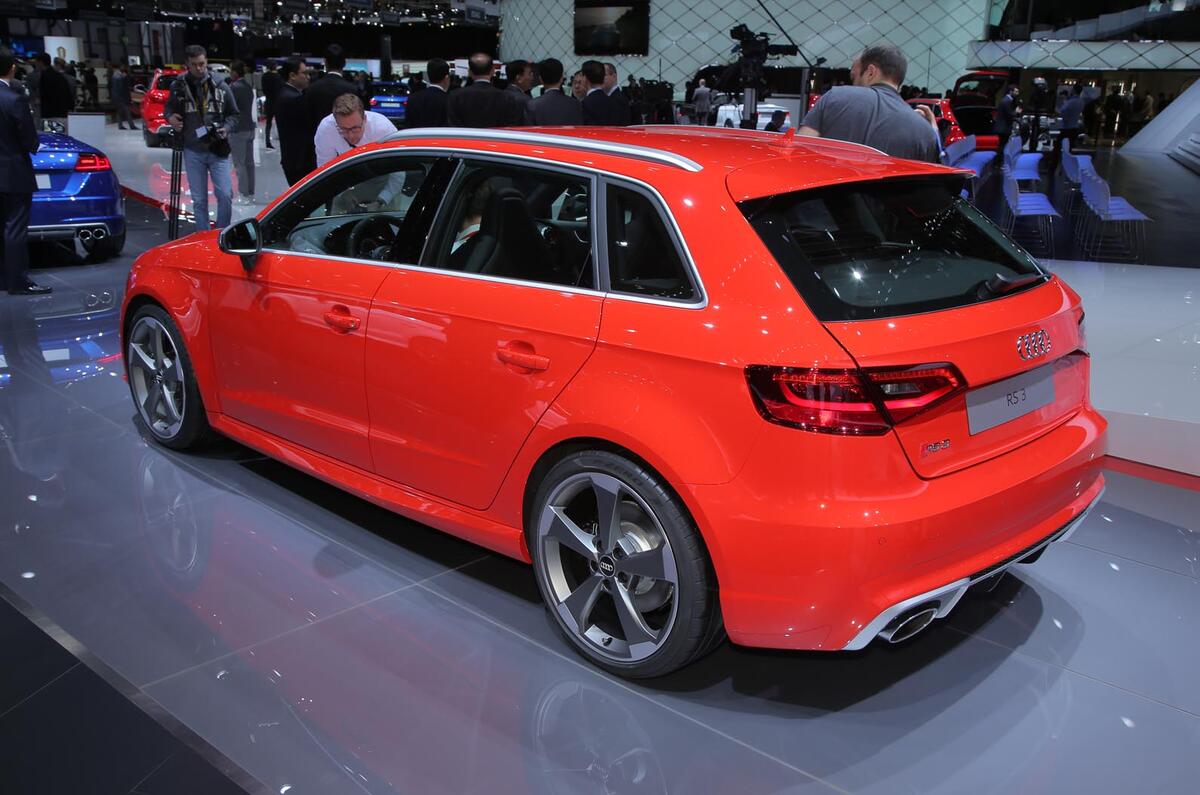

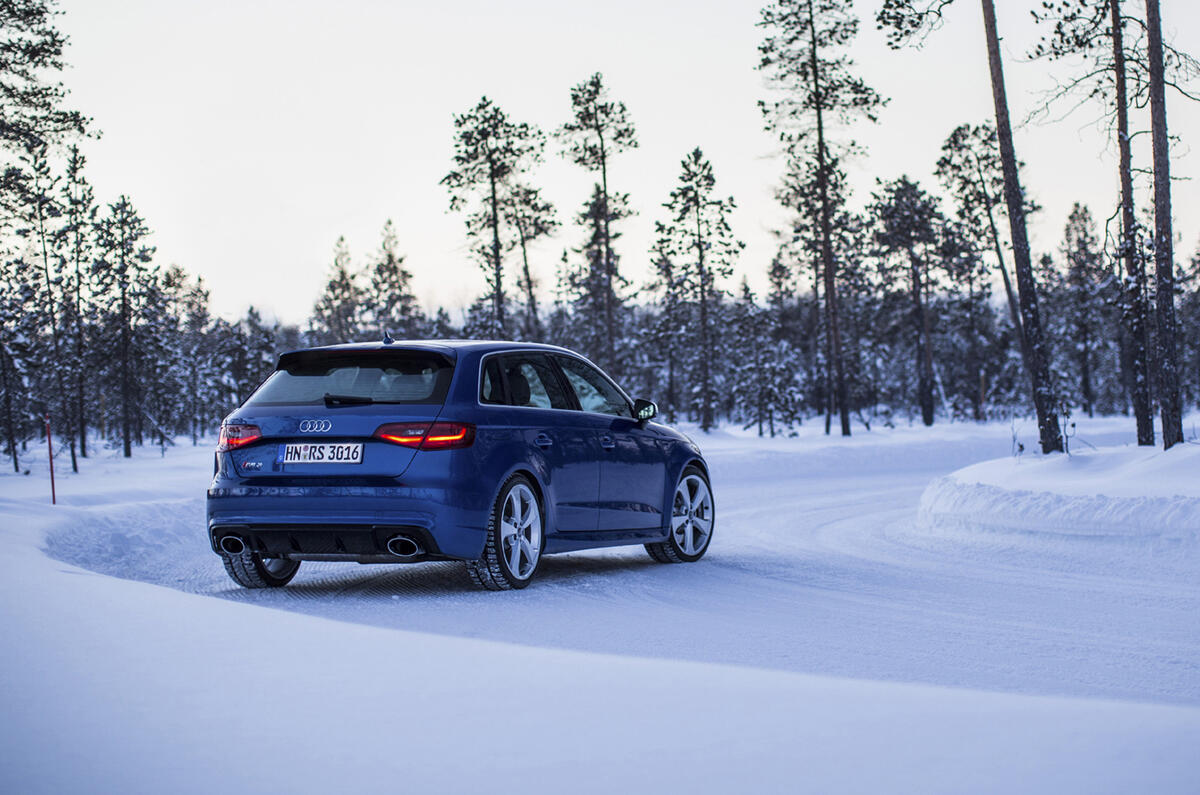
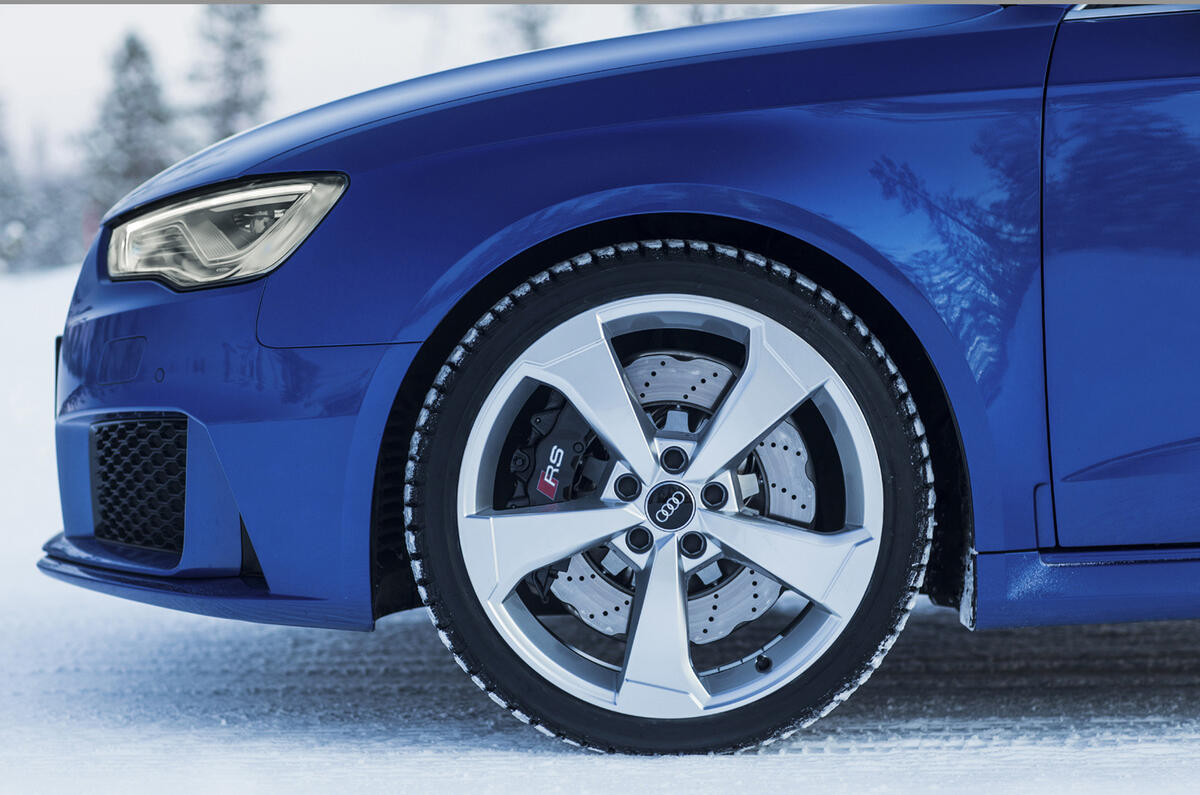
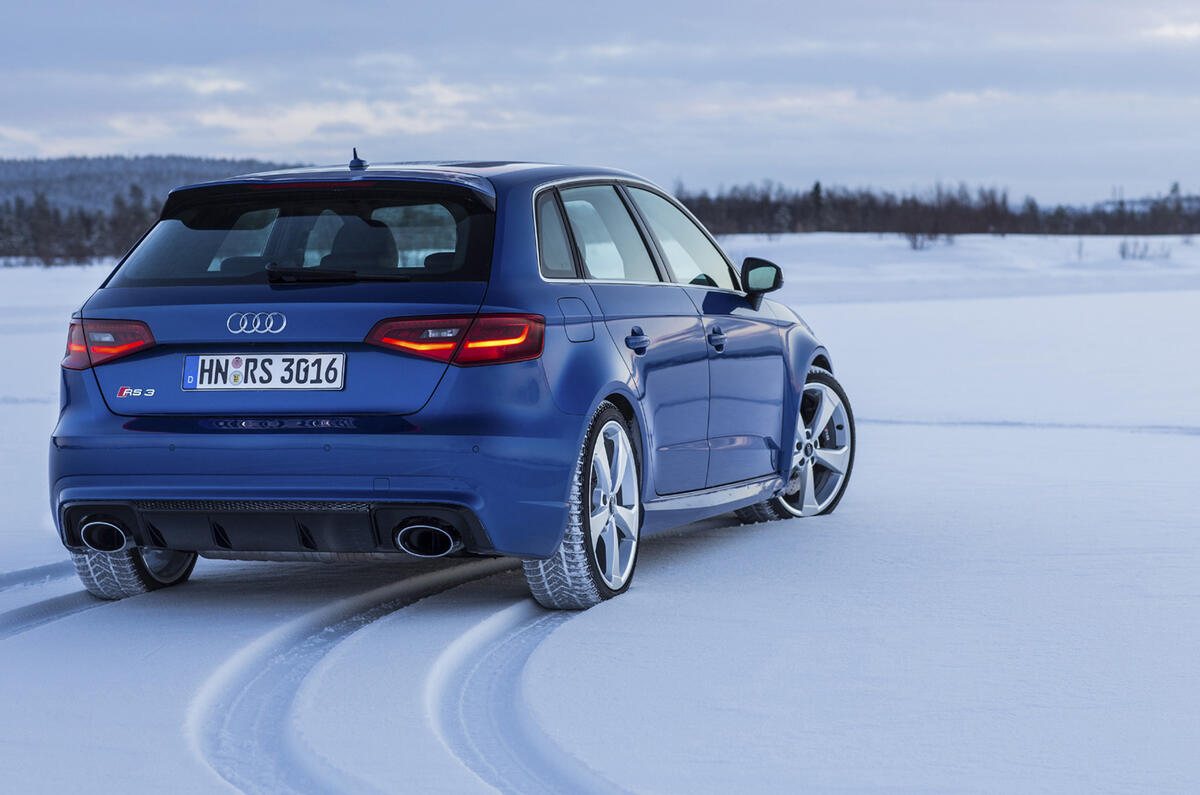
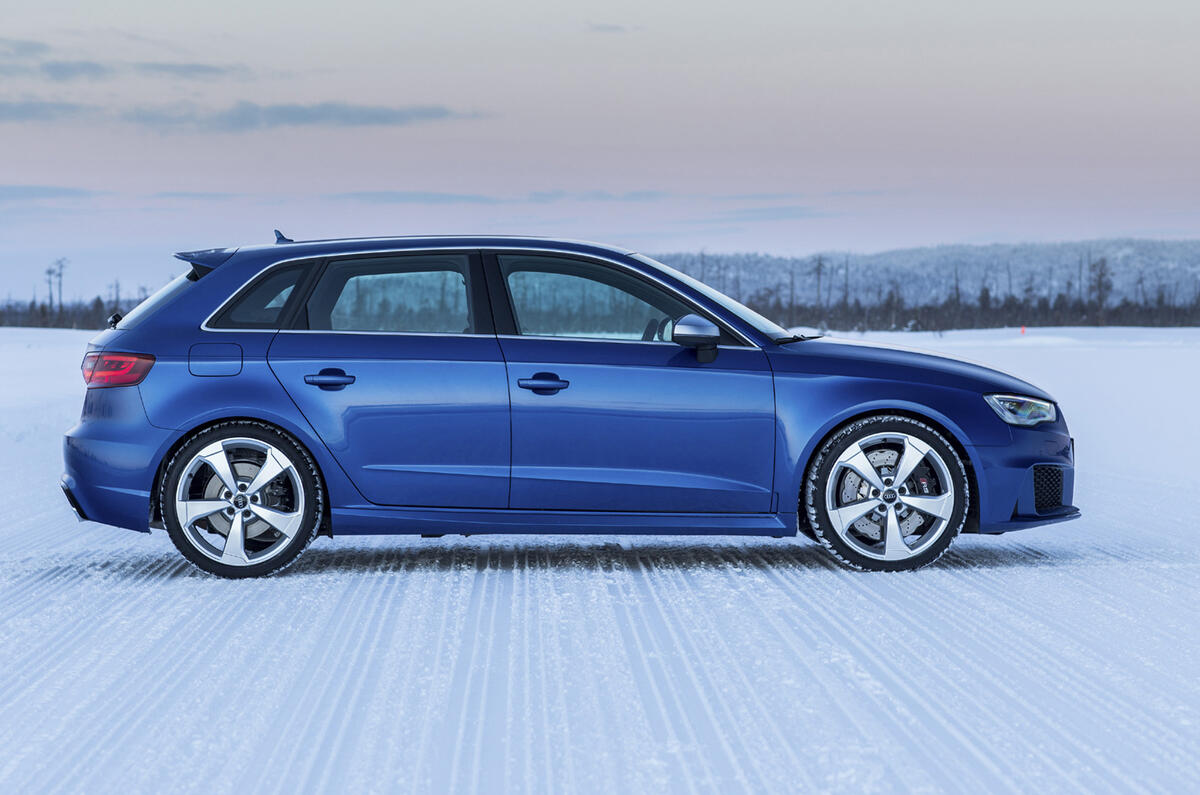
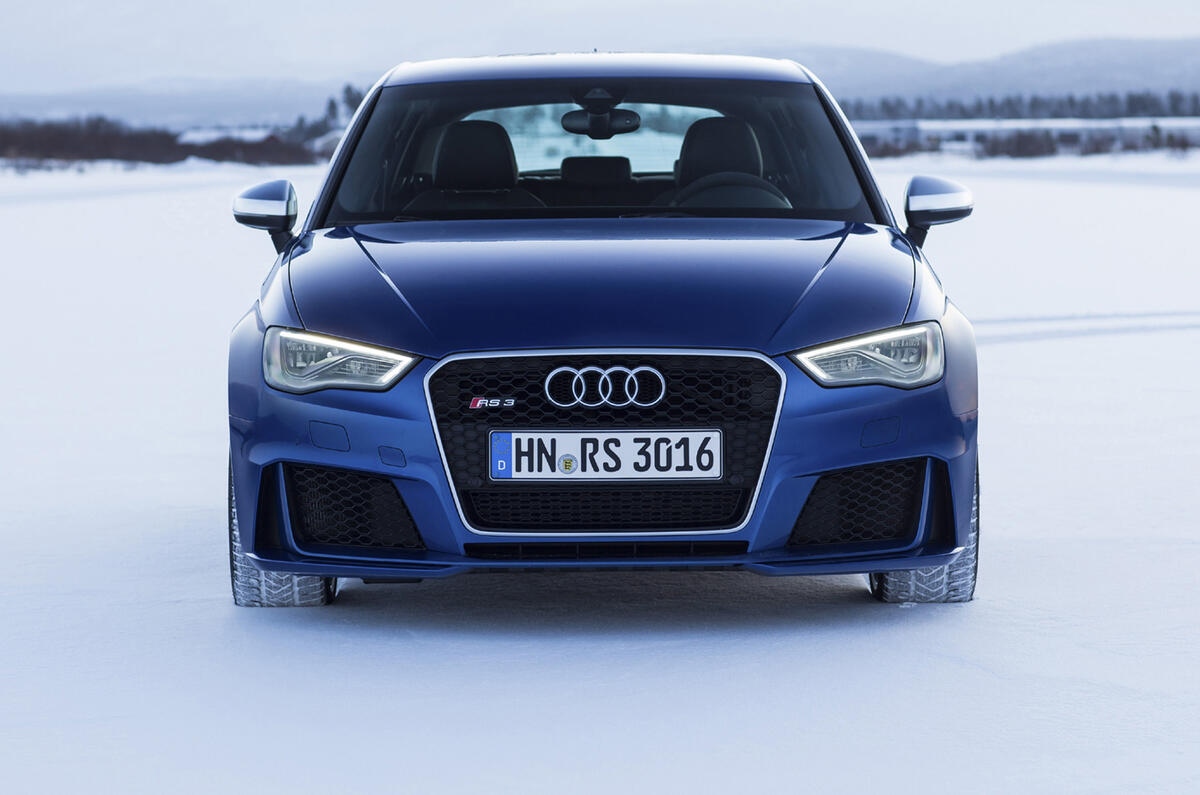
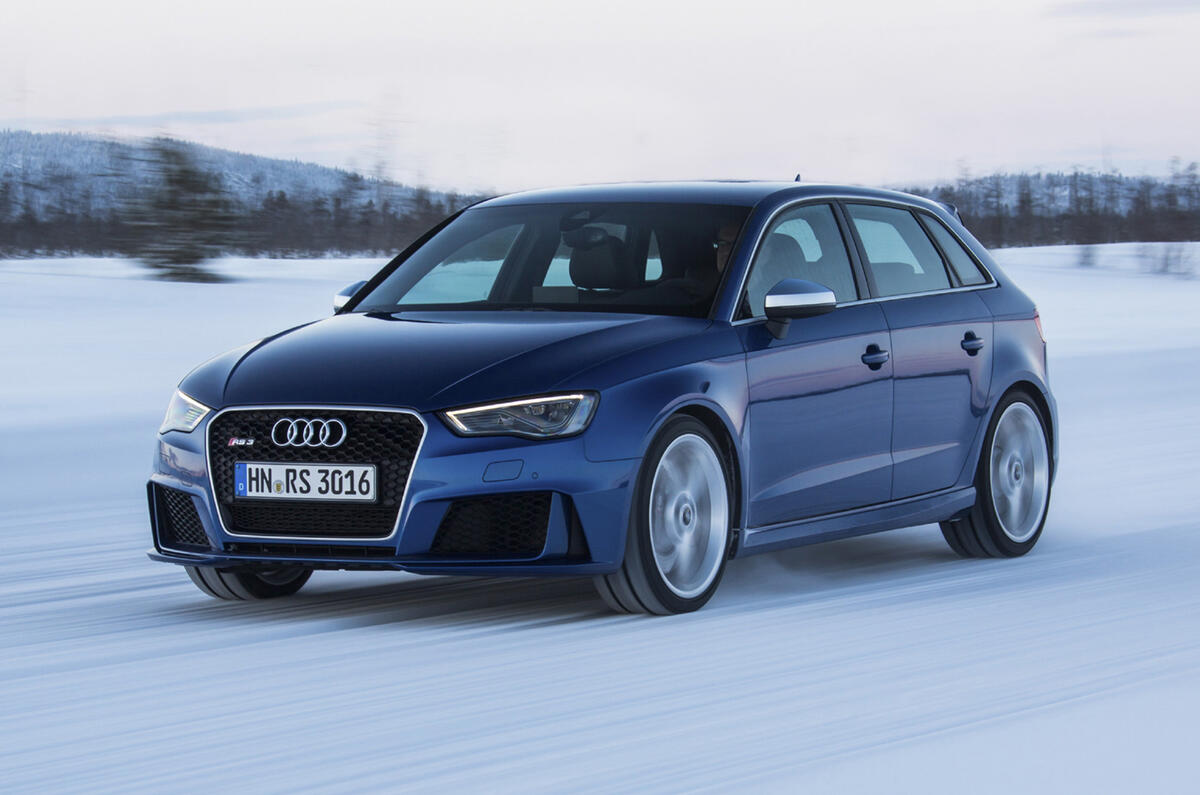
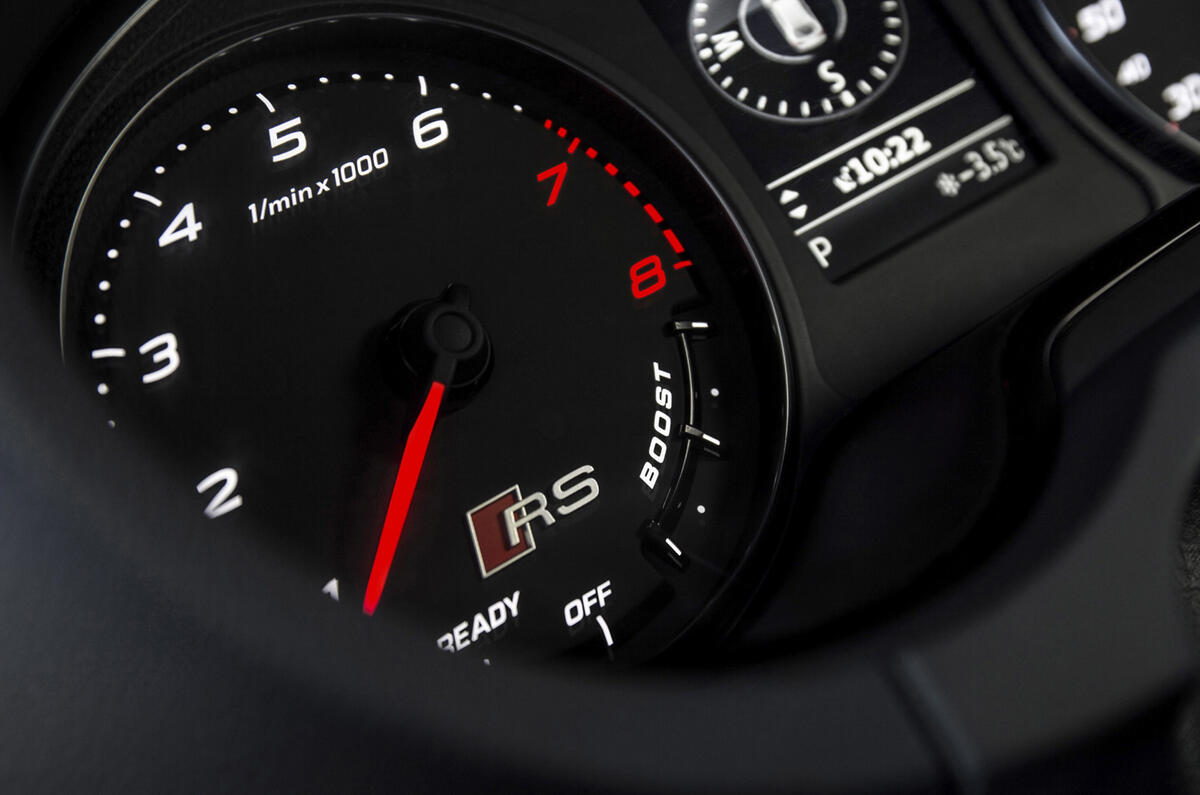
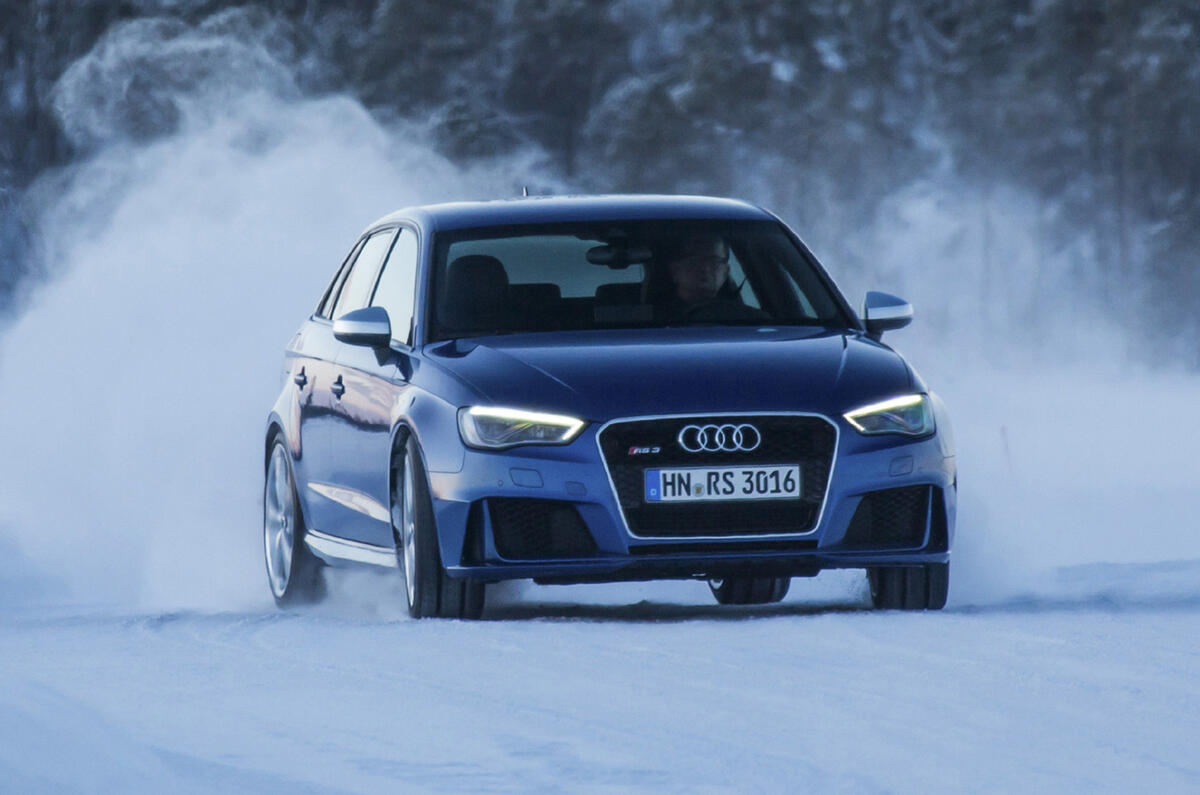
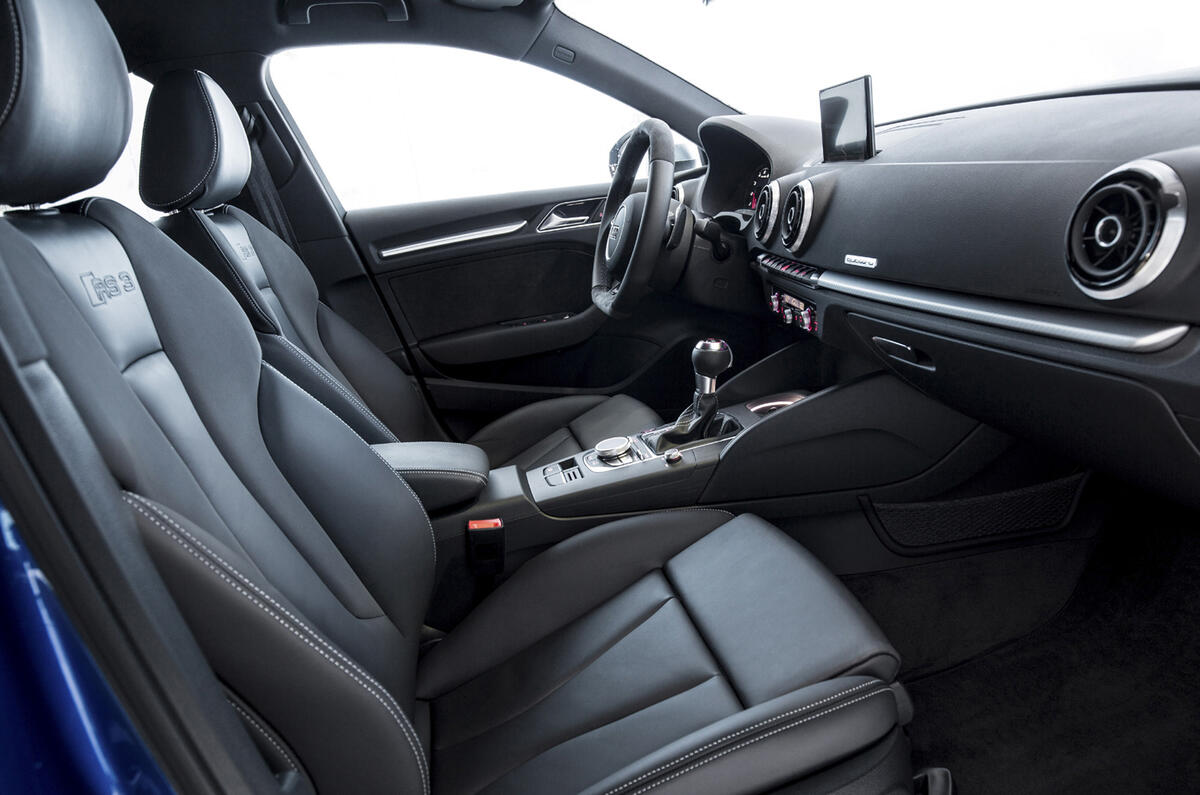
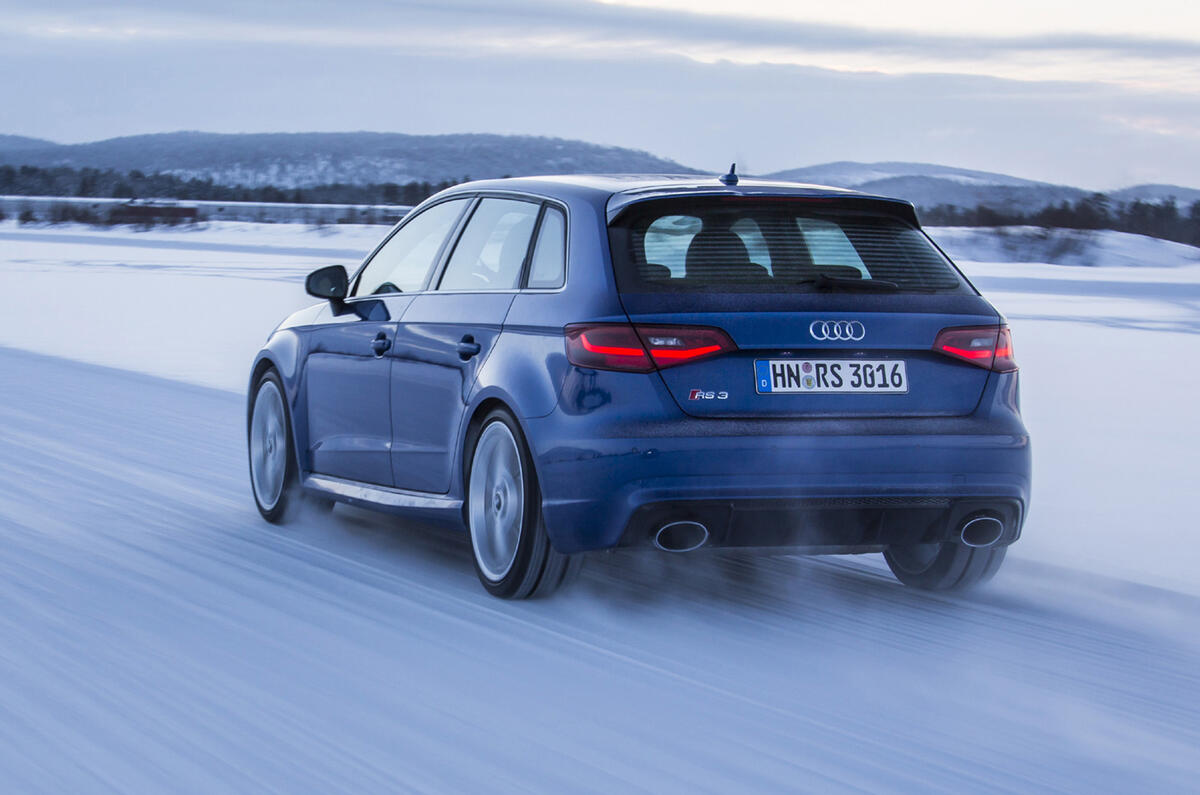

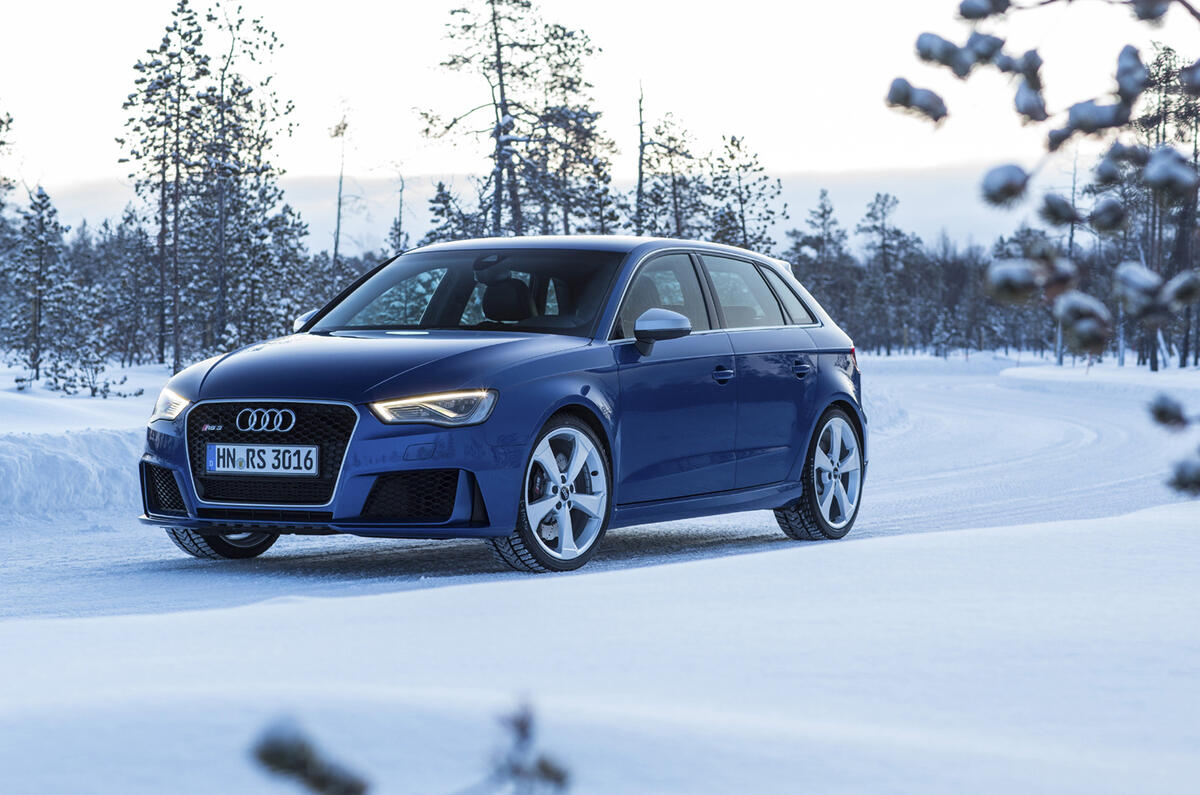
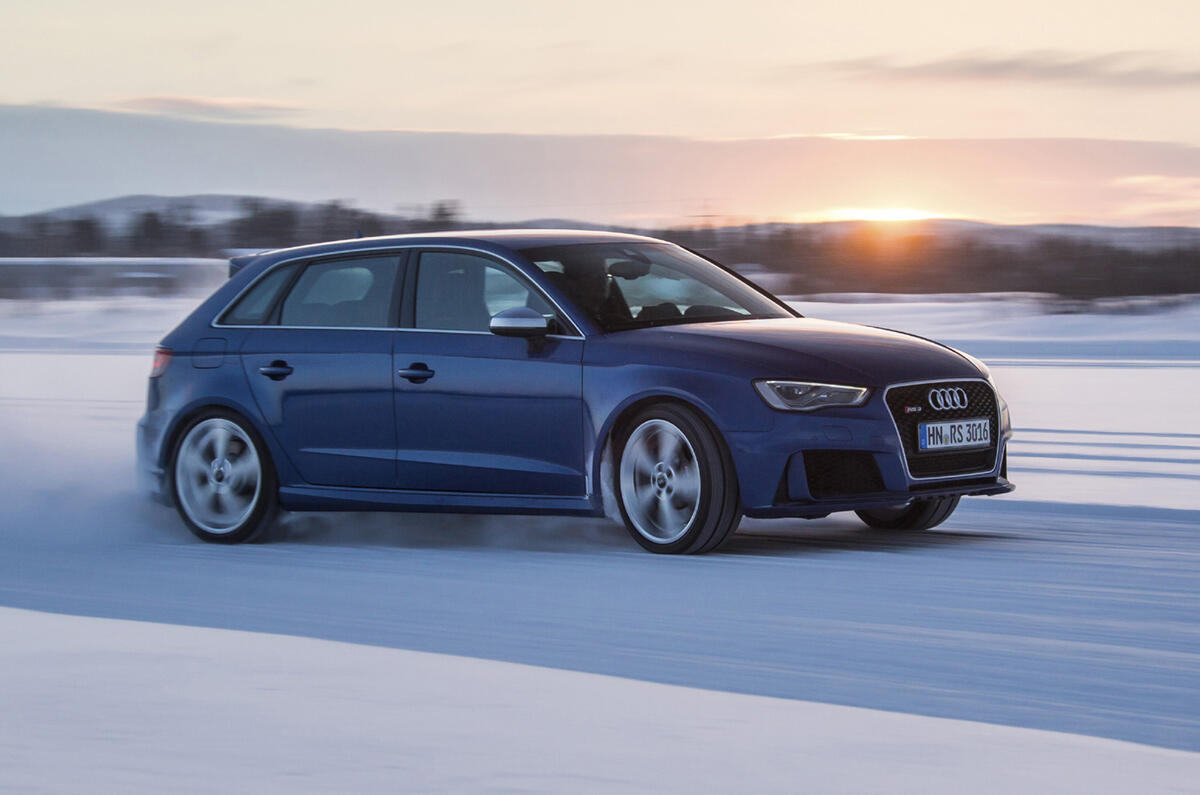
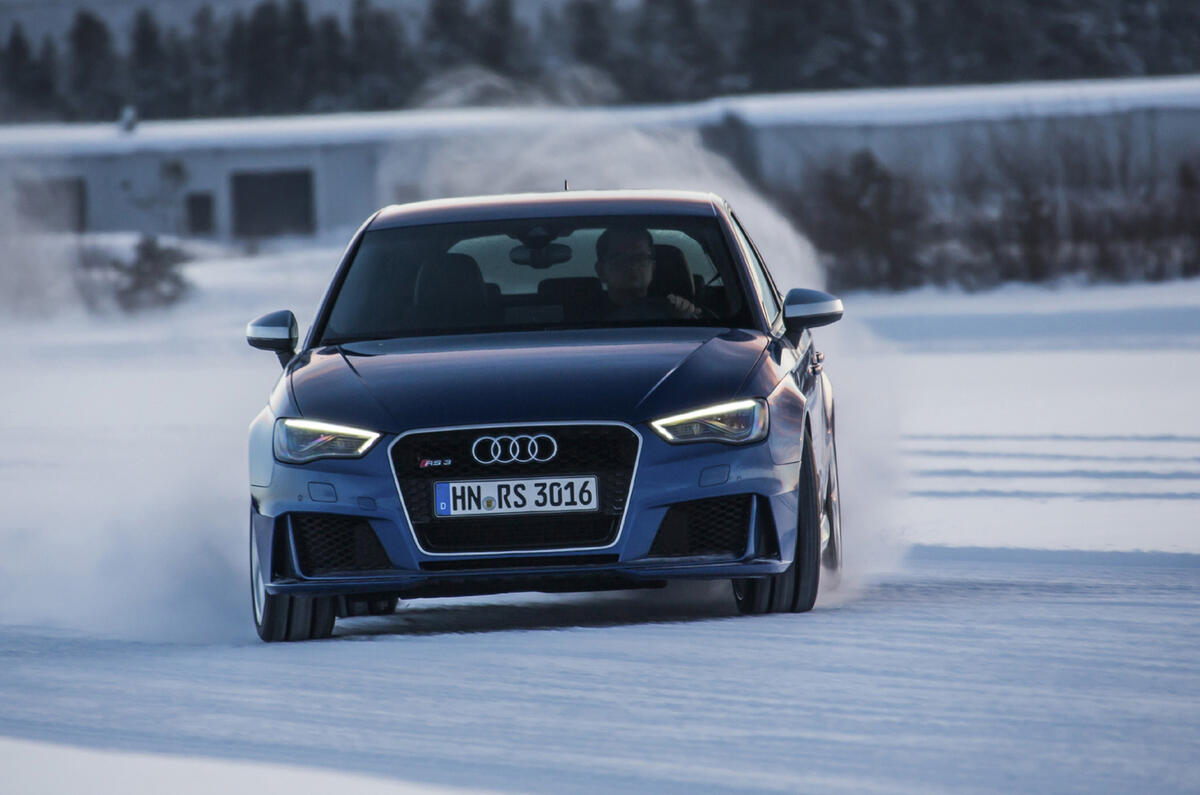
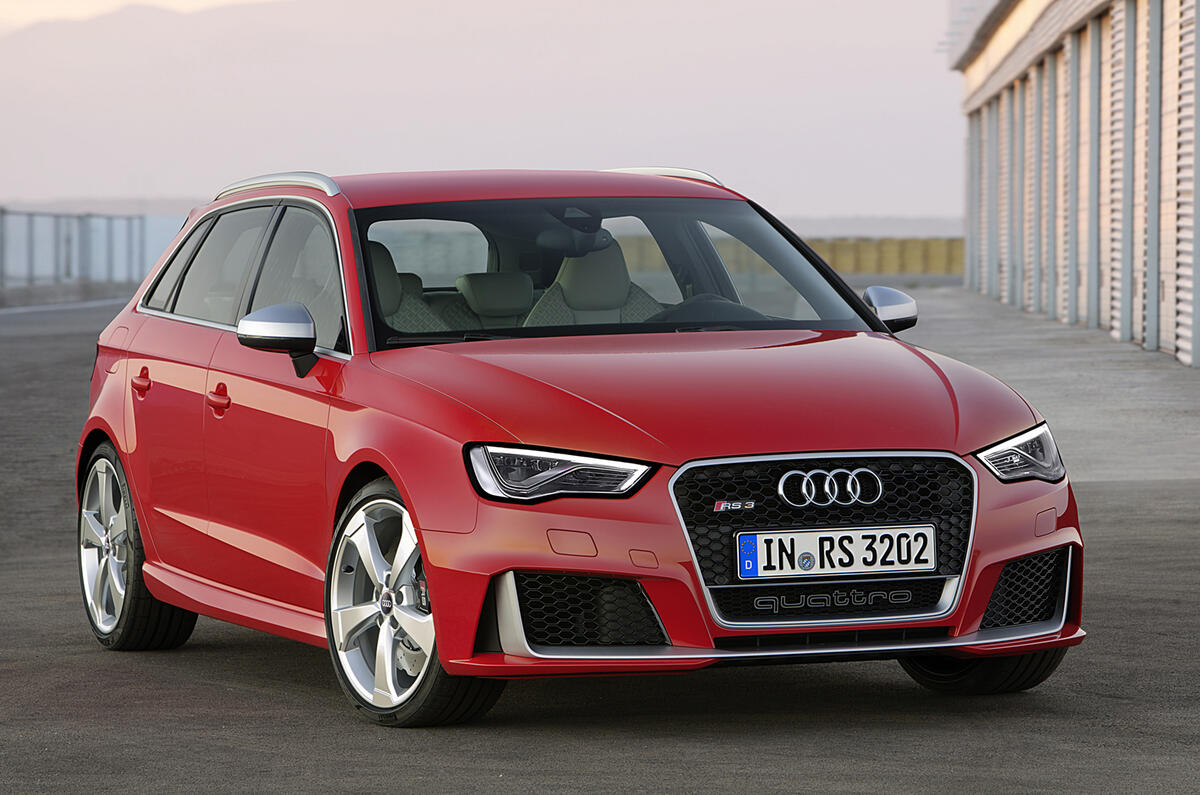
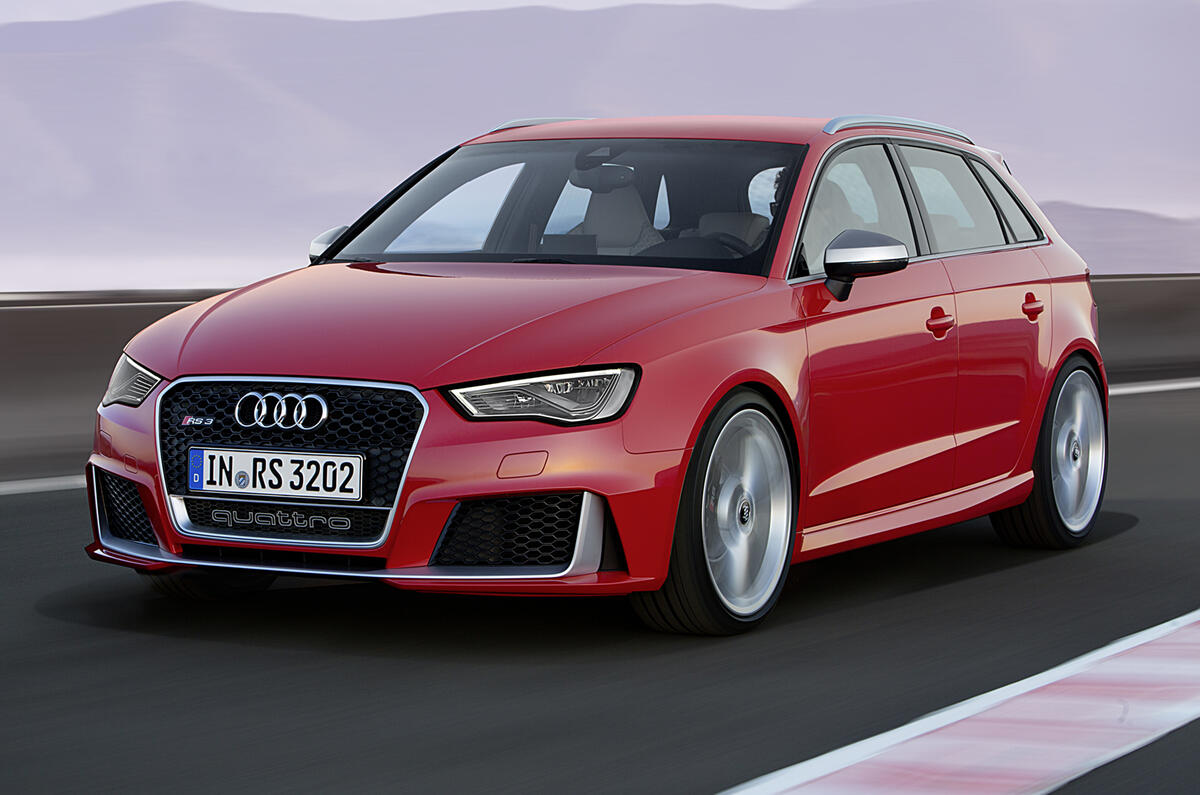
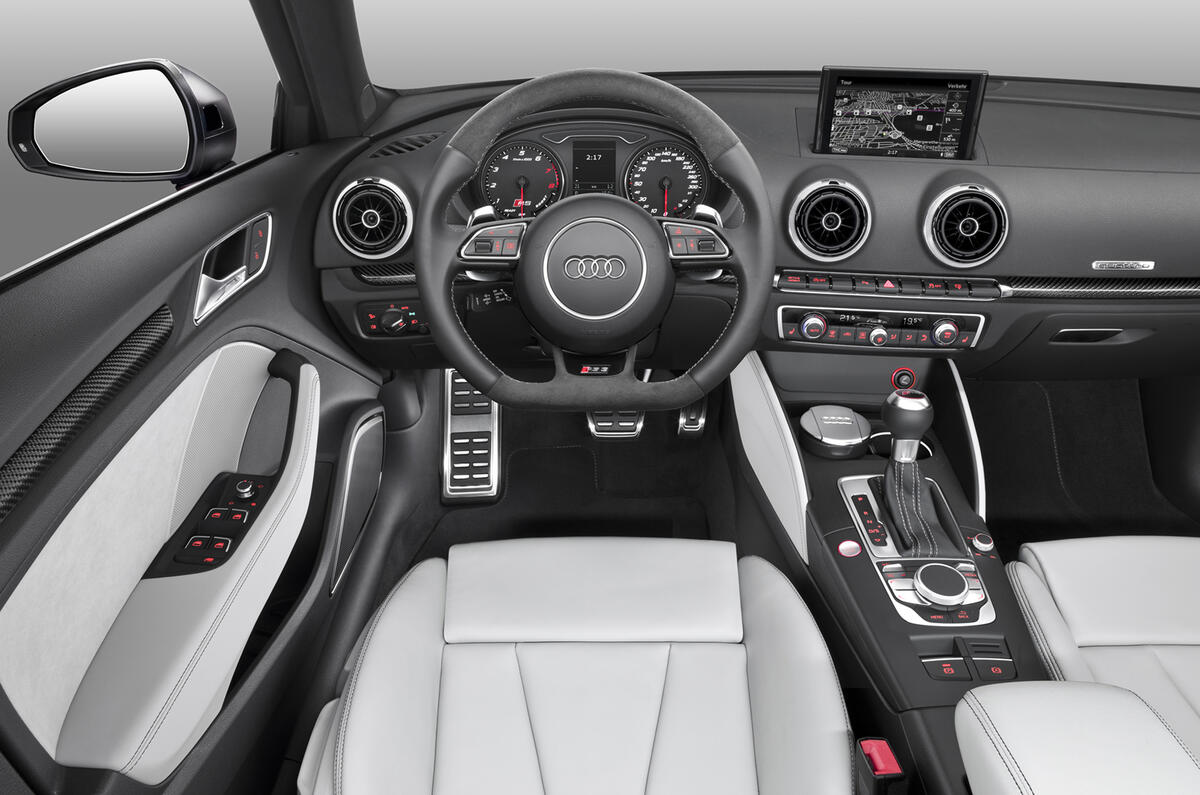
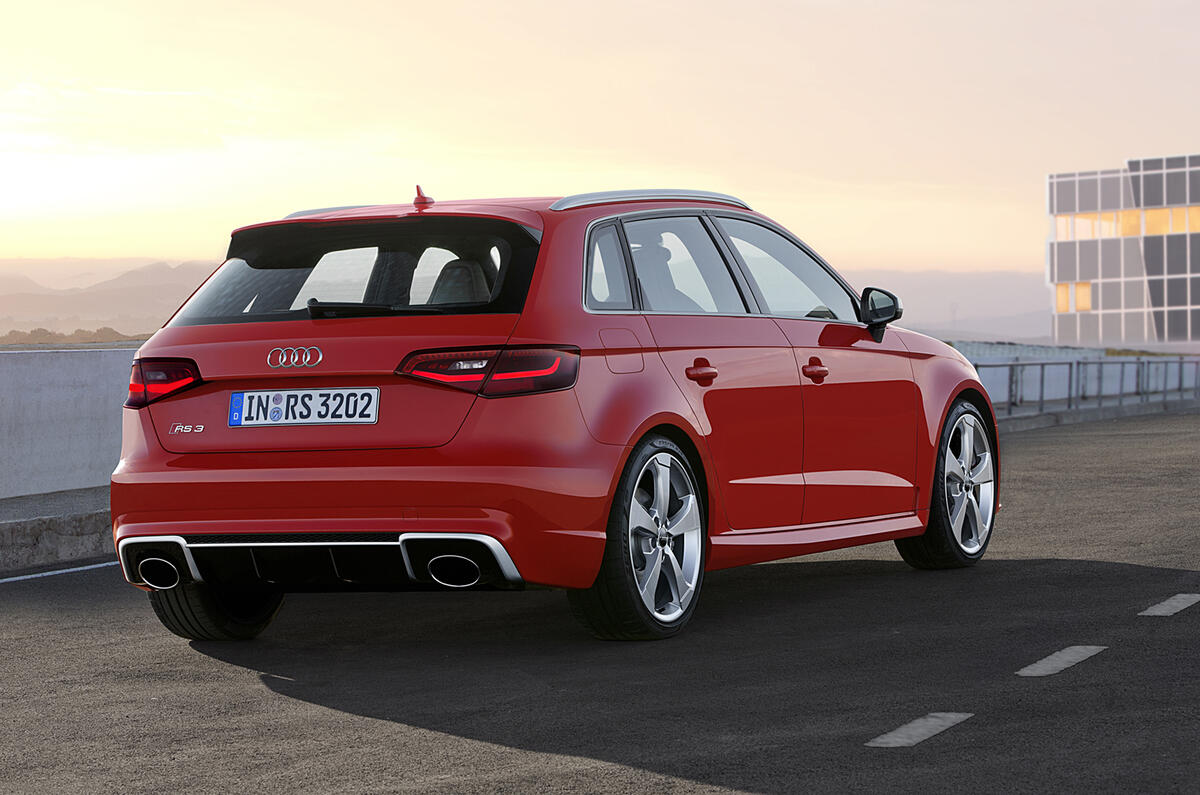
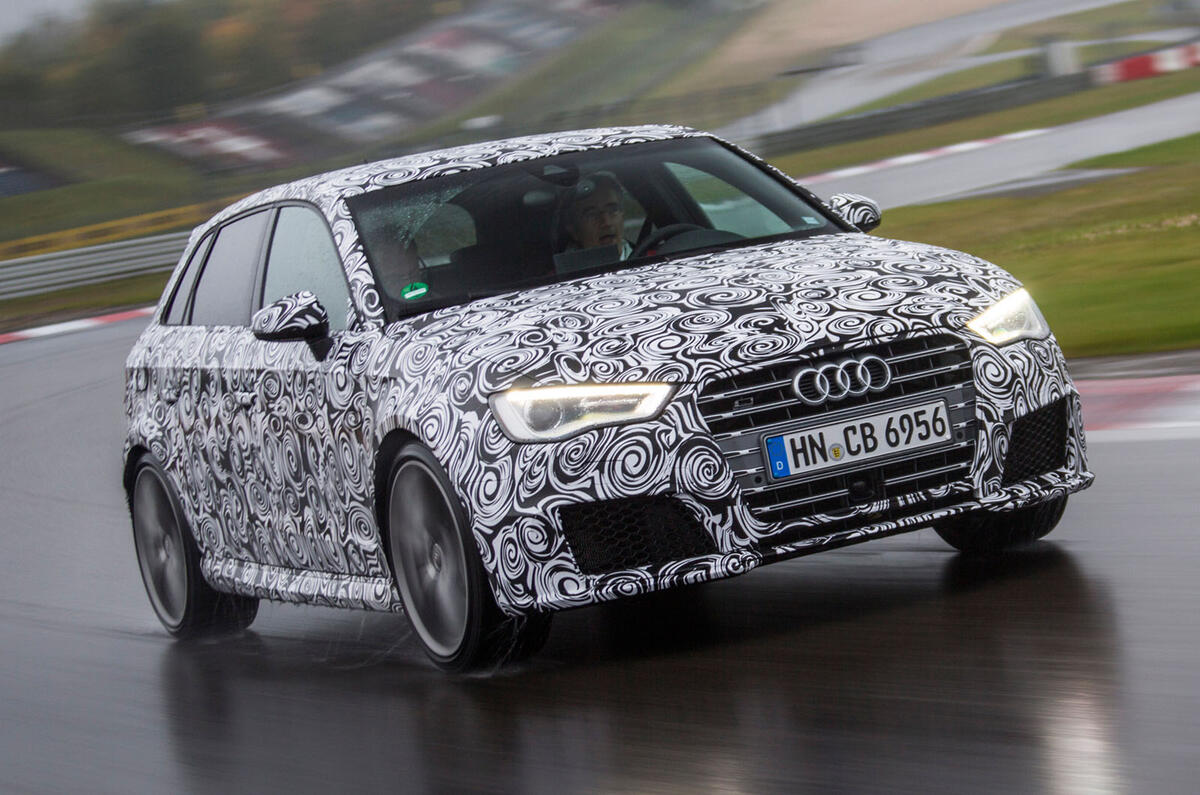
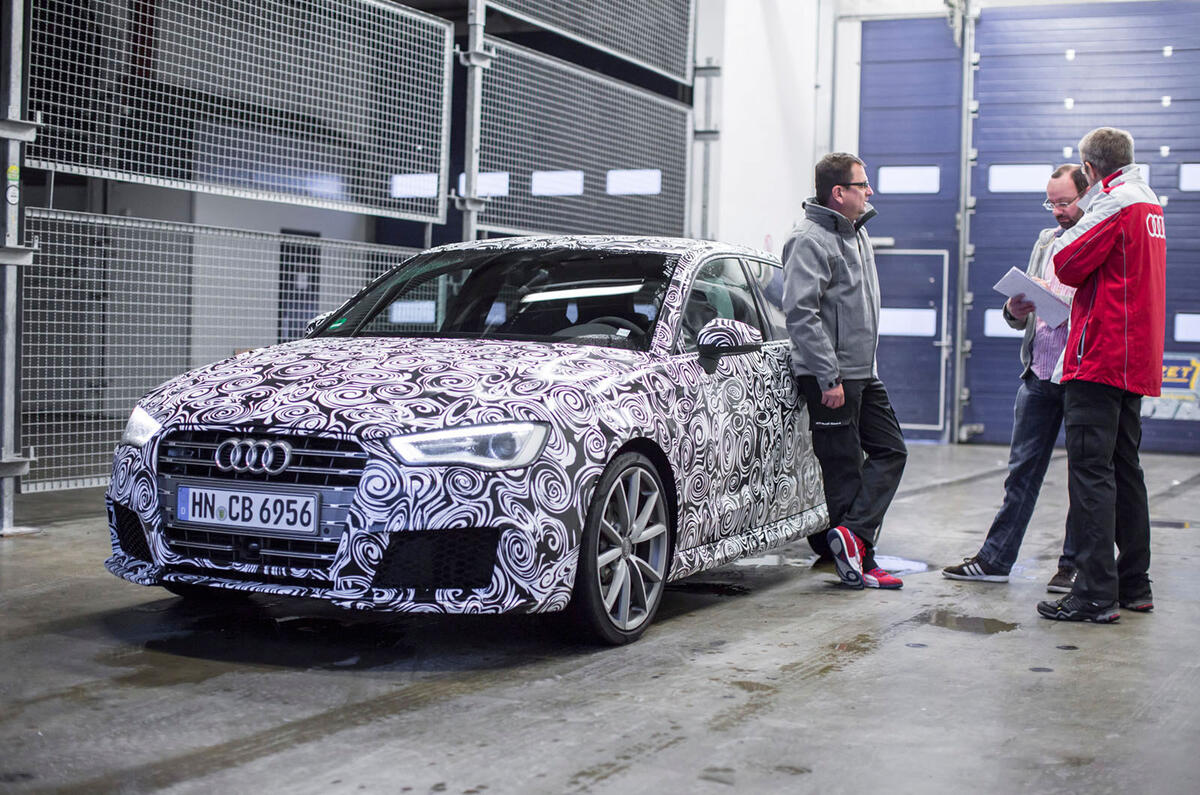
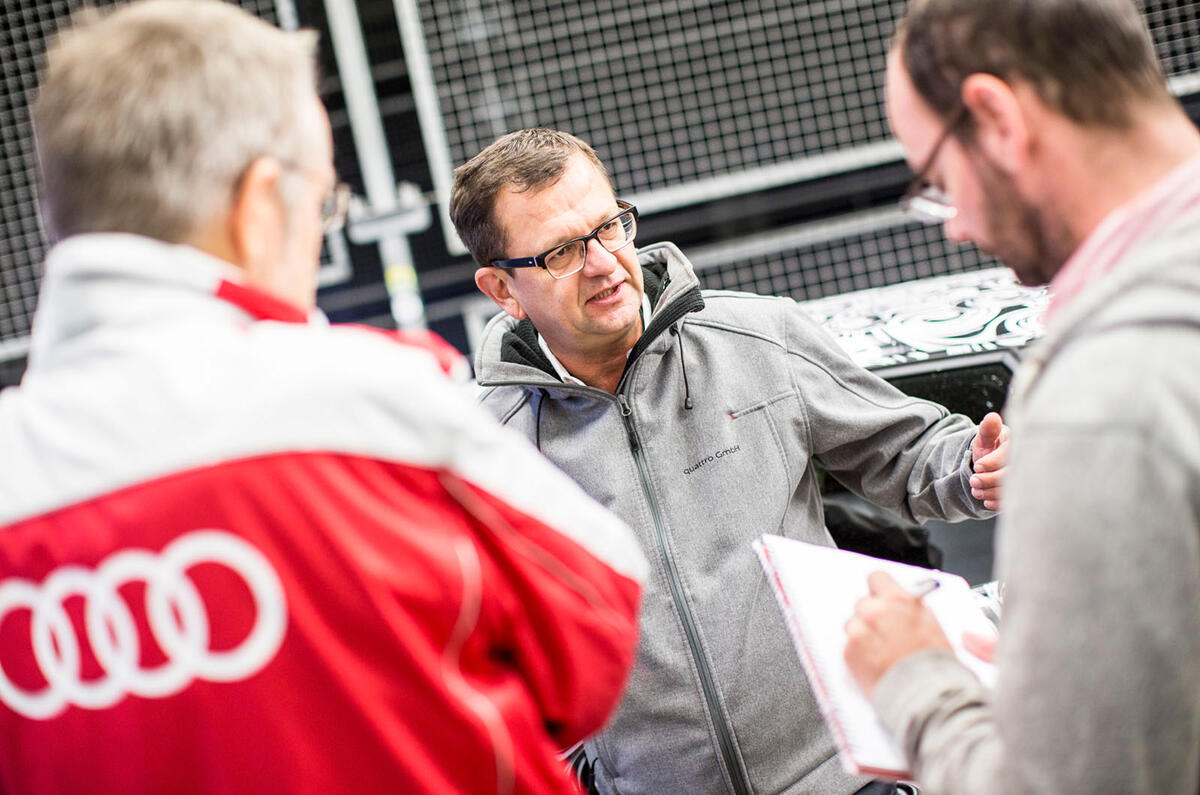
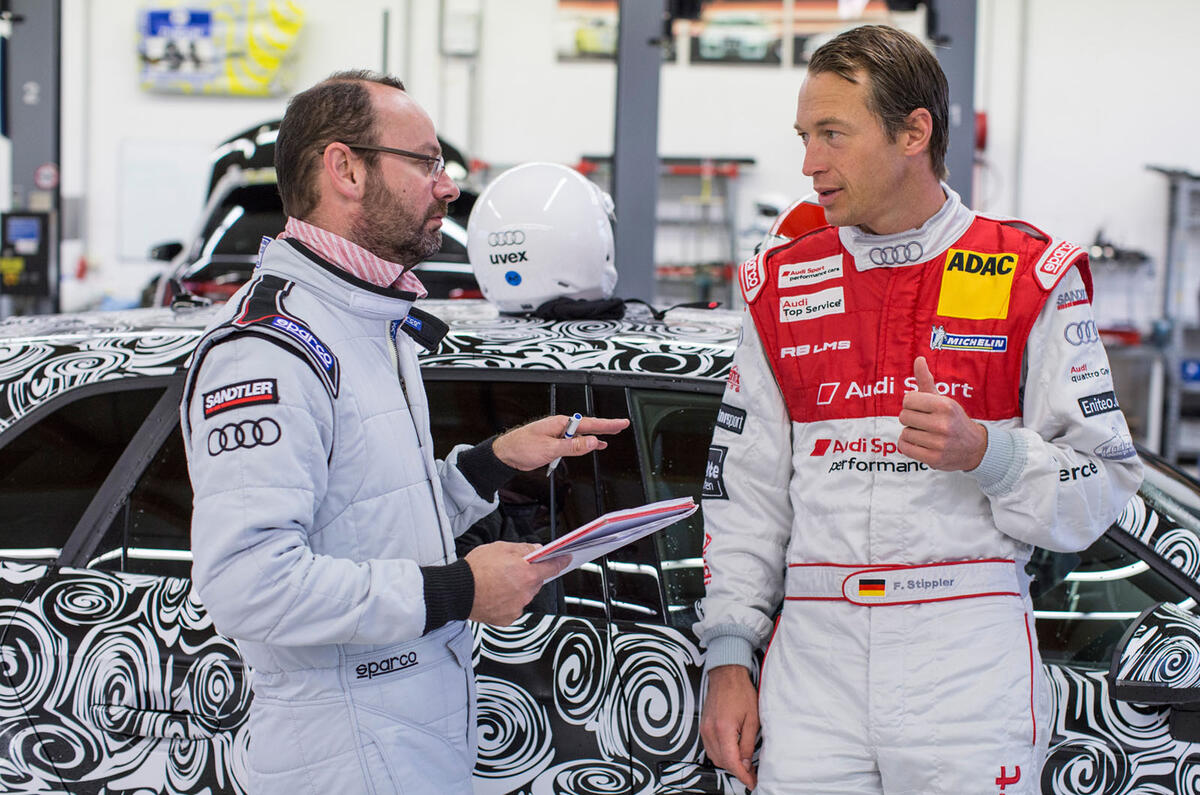
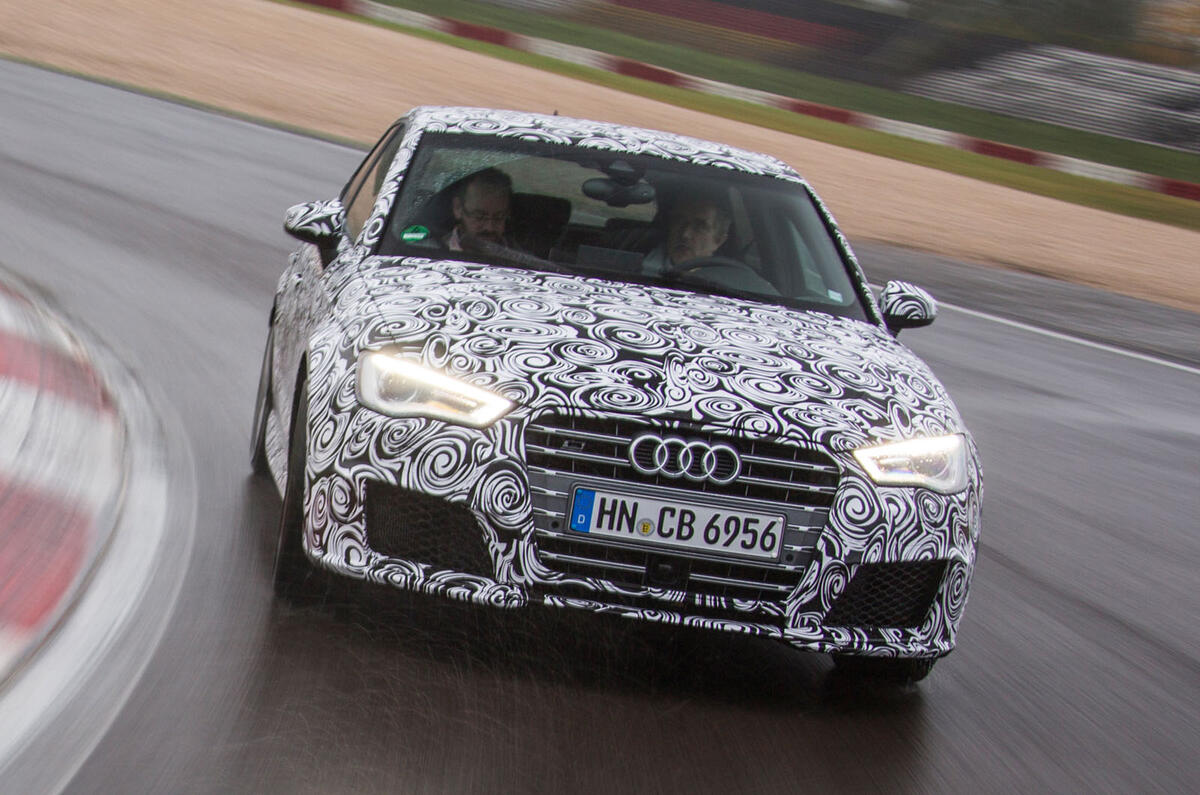
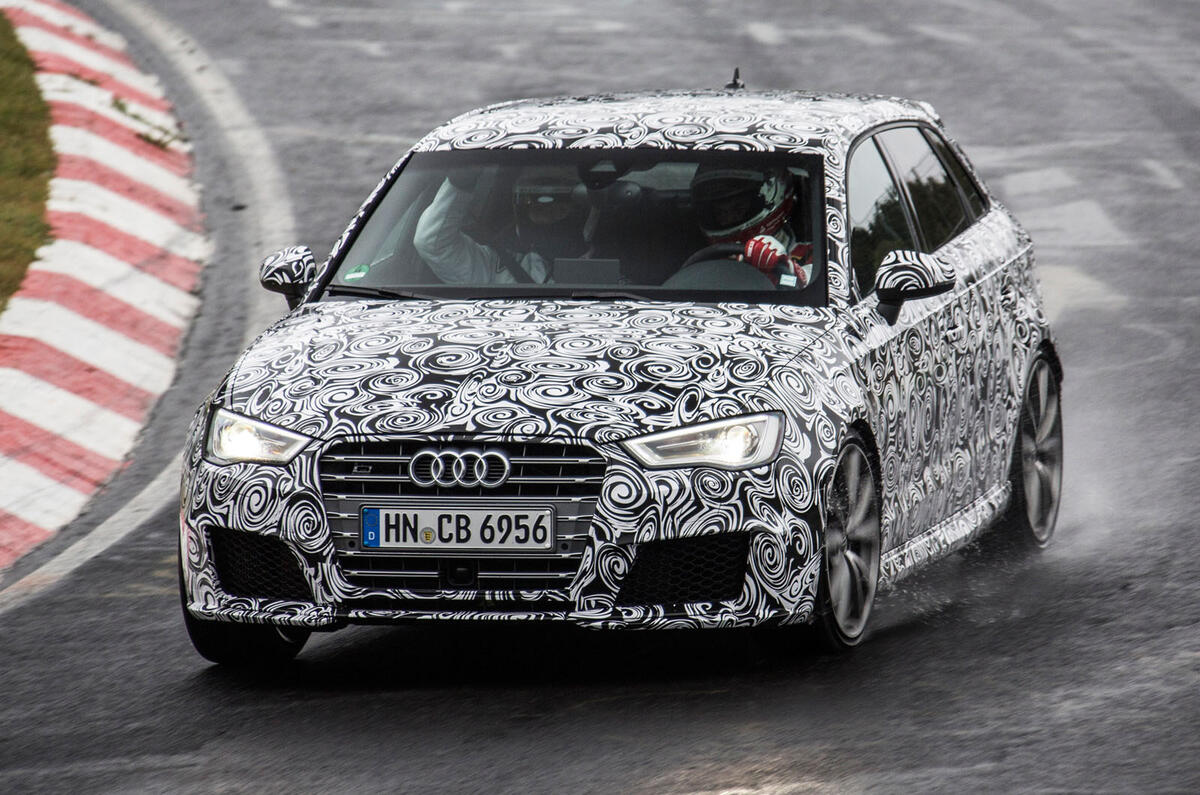
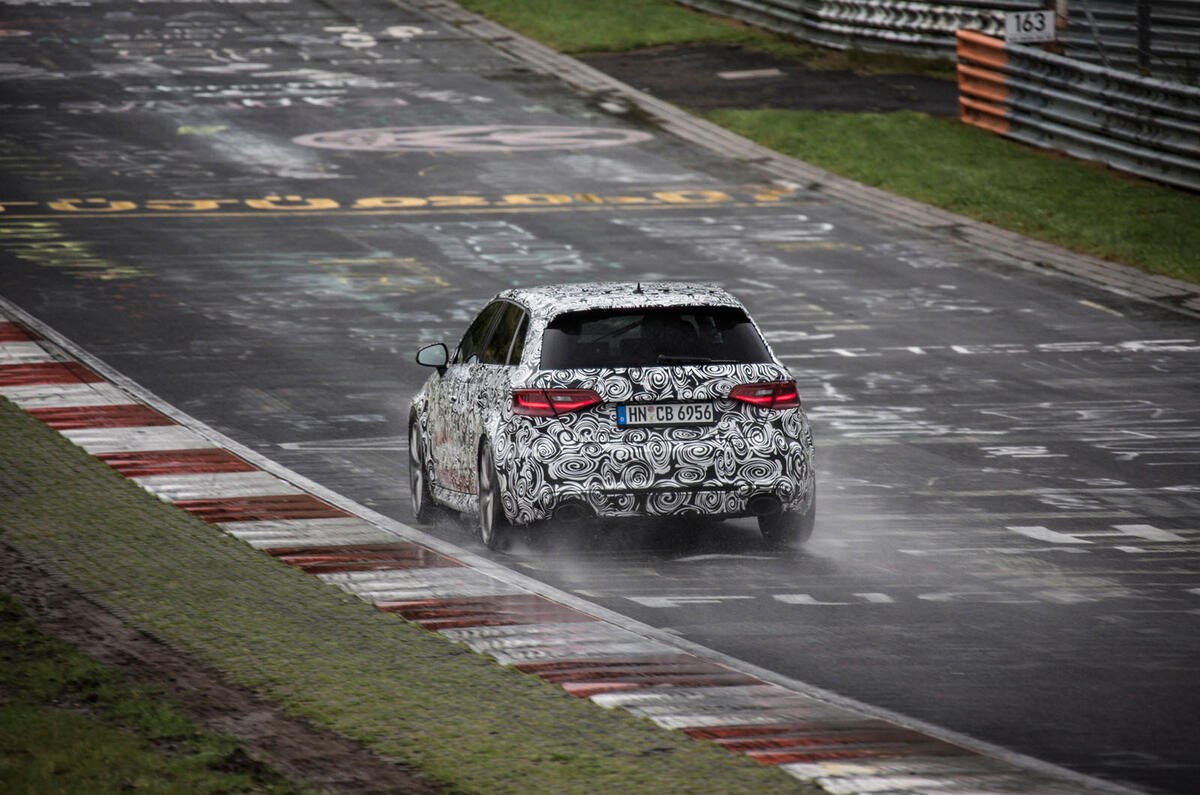
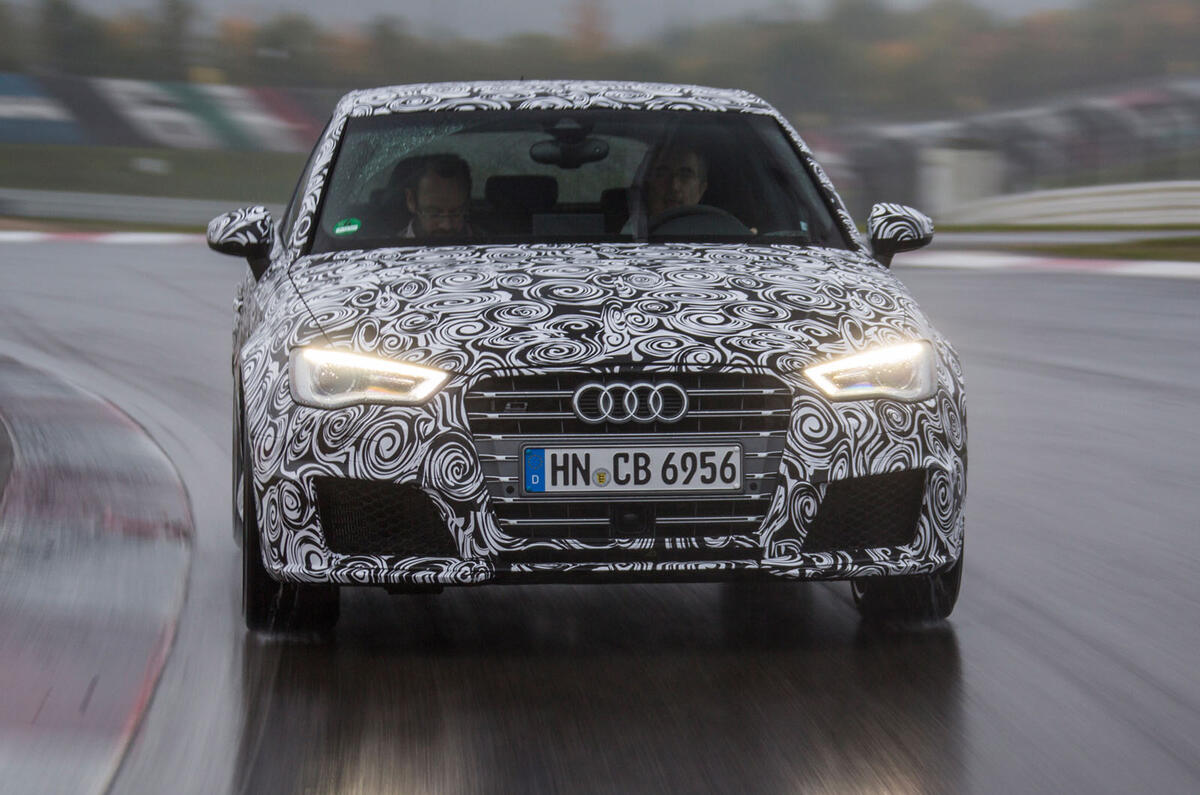
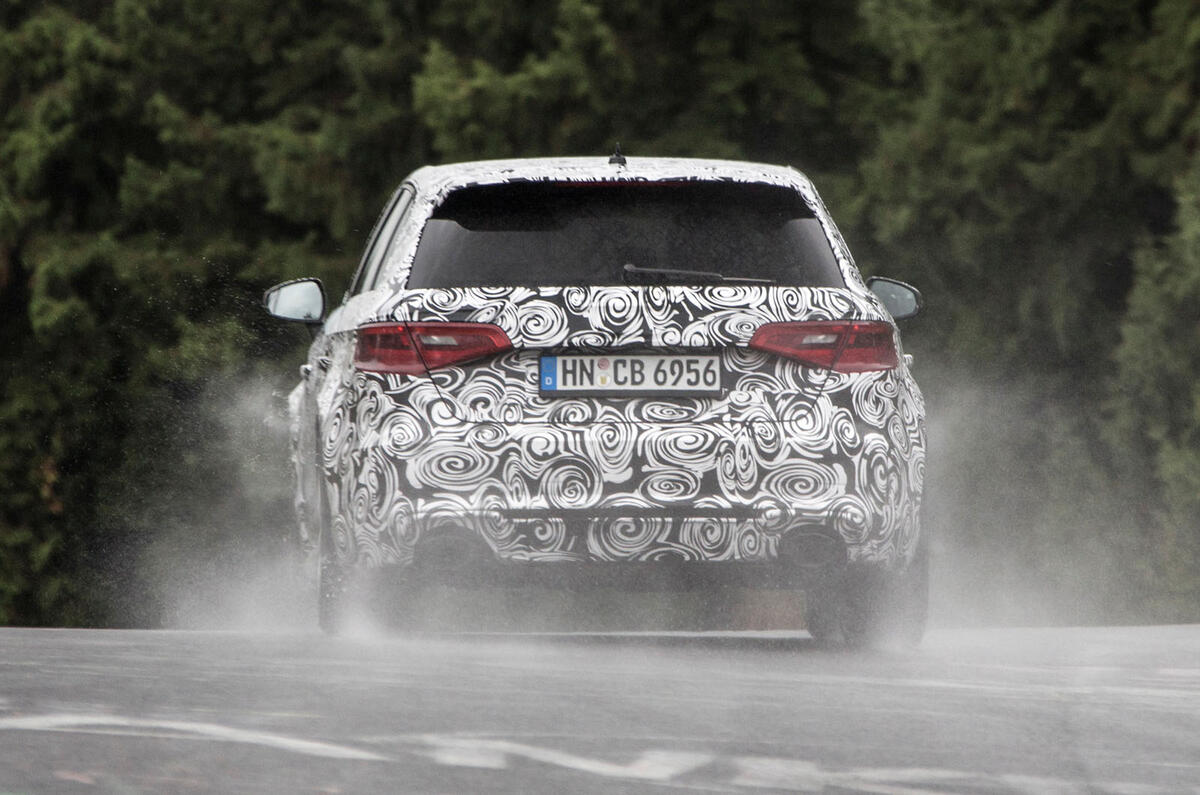
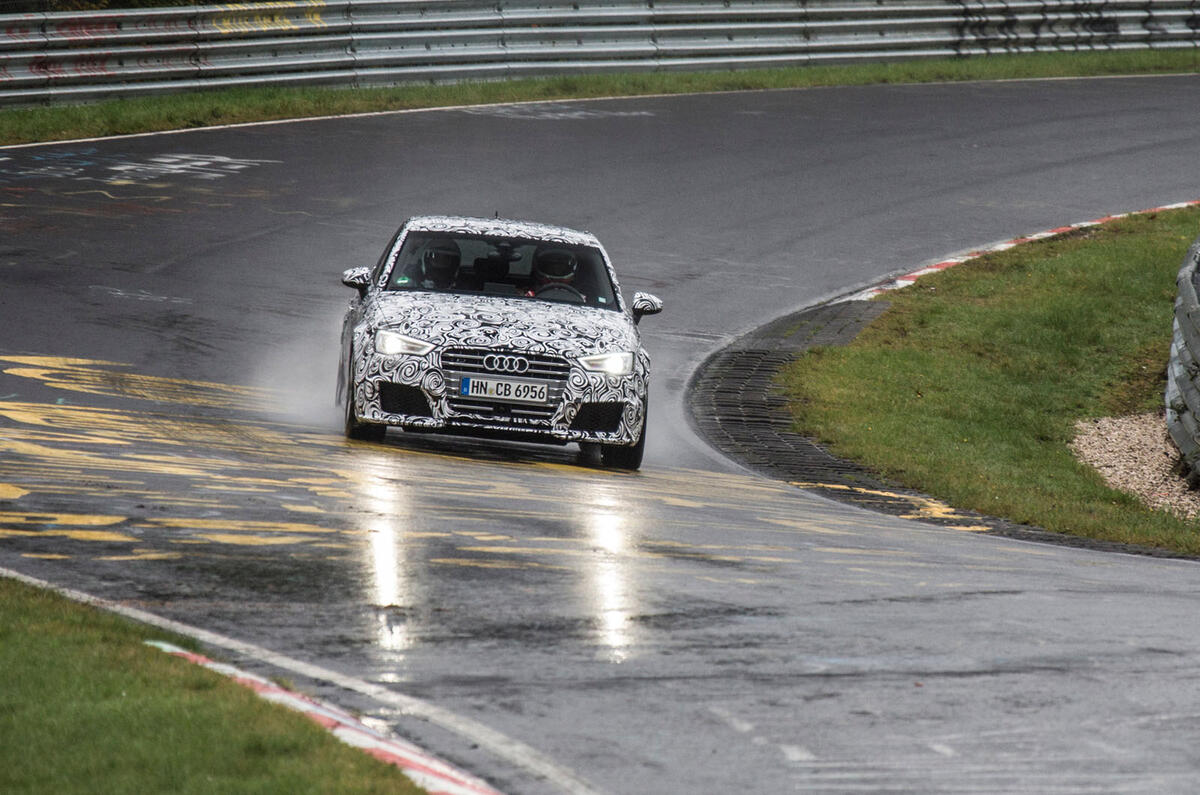
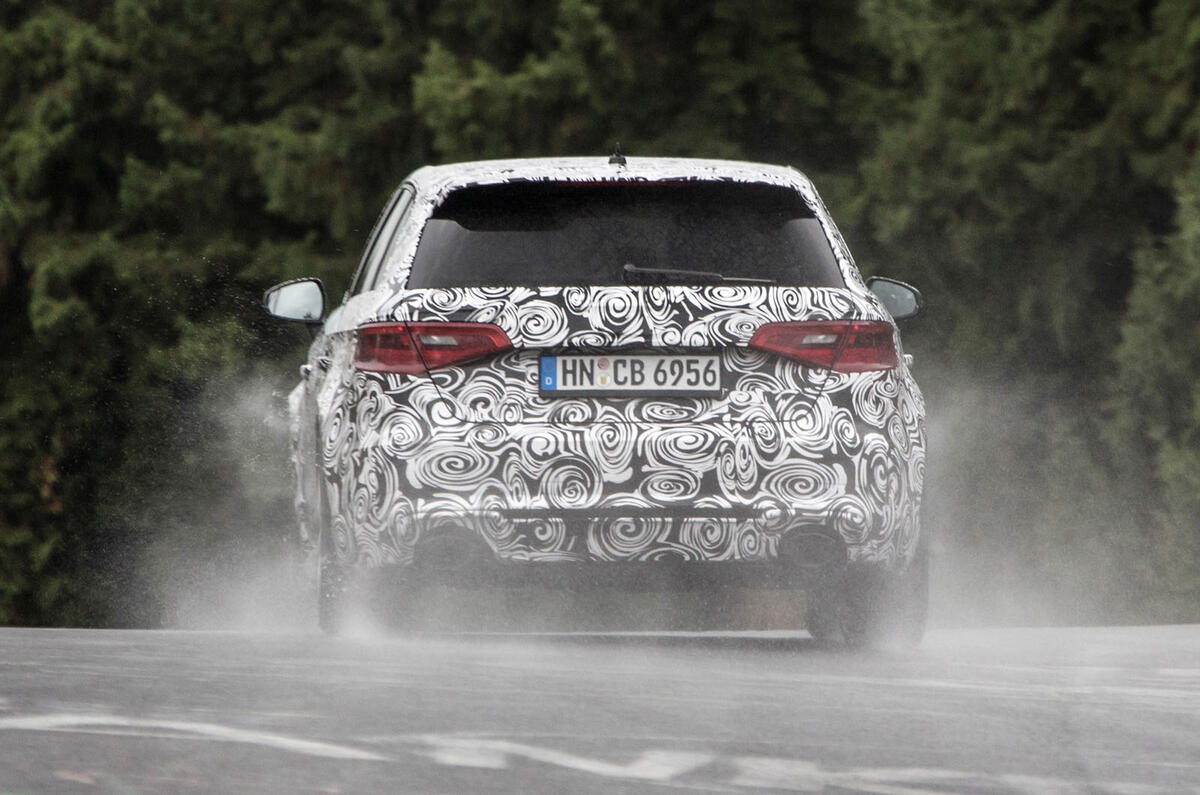
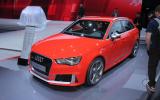
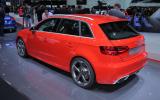
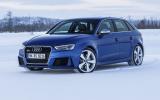
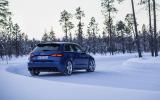
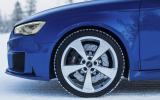
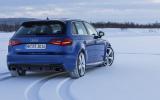
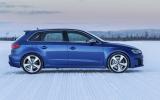
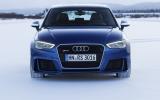
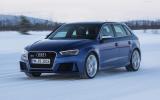
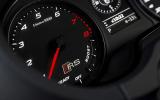
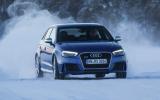
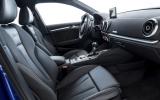
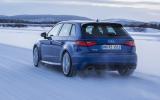
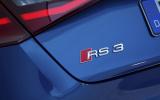
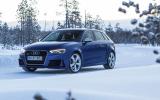
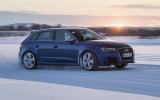
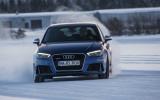
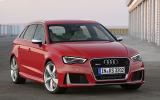
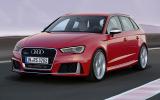
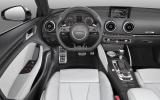
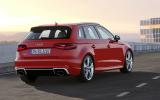
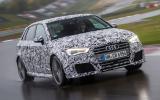
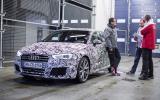
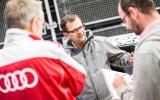
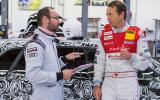
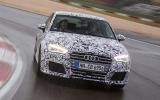
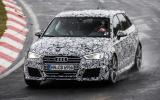
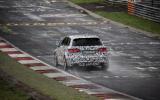
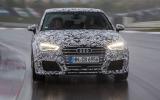
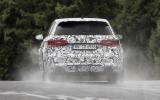
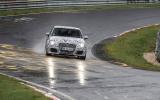
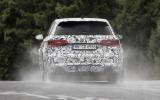


Join the debate
Add your comment
£40k for a posh Golf, and
If
Ho hum........